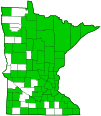Banded tussock moth
(Halysidota tessellaris)
Conservation • Description • Habitat • Ecology • Distribution • Taxonomy
| Hodges # | 8203 |
||
Conservation Status |
|||
| IUCN Red List | not listed |
||
| NatureServe | NNR - Unranked |
||
| Minnesota | not listed |
||
Description |
Banded tussock moth is a medium-sized moth with a wingspan of 1¾″. The forewings are long, slender, and yellowish-white, with four wavy, horizontal bands of beige composed of irregular rectangular blocks edged with fine black lines. The hindwings are unbanded and much smaller. They are mostly translucent white with pale yellow near the base. The body is densely covered with yellow hairs. The thorax has two parallel, turquoise blue lines on the upper side. The caterpillar is up to 1¾″ long. It is densely covered with long, yellowish-brown, tan, or dark gray, hollow, unicellular, hair-like structures (setae). The second and third thoracic segments each have a pair of long, moveable, black inner and white outer tufts (lashes). The lashes of the second thoracic segment project forward beyond the head. The eighth abdominal segment also has a set of lashes. |
Size |
Adult: 1¾″ wingspan Caterpillar: 1¾″ long |
Similar Species |
Habitat and Hosts |
Deciduous woods |
Biology |
Season |
Adult: One brood, May to August Caterpillar: July to October |
Behavior |
The caterpillars make little or no effort to hide, and are often seen on upper leaf surfaces and often near their own leaf damage. This suggests that, like the adult, they unpalatable to birds. |
Life Cycle |
|
Larva Hosts |
Alder (Alnus spp.), ash (Fraxinus spp.), birch (Betula spp.), blueberry (vaccinium spp.), elm (Ulmus spp.), grape (vitis spp.), northern hackberry (Celtis occidentalis), hazel (Corylus spp.), hickory (Carya spp.), oak (Quercus spp.), poplar (Populus spp.), walnut (Juglans spp.), and willow (Salix spp.). |
Adult Food |
Adults acquire alkaloids from host plants making them unpalatable to predators. |
Distribution |
||
|
Sources 21, 24, 27, 29, 30, 71, 75, 82, 83. Biodiversity occurrence data published by: Minnesota Biodiversity Atlas (accessed through the Minnesota Biodiversity Atlas Portal, bellatlas.umn.edu, 8/26/2025). |
|
| 8/26/2025 | ||
Occurrence |
||
Common to abundant |
||
Taxonomy |
|
Order |
|
Superfamily |
Noctuoidea (Owlet Moths and Allies) |
Family |
Erebidae (Underwing, Tiger, Tussock, and Allied Moths) |
Subfamily |
Arctiinae (tiger moths and allies) |
Tribe |
Arctiini (tiger moths) |
Subtribe |
Phaegopterina |
Genus |
Halysidota |
Family Genus |
|
Subordinate Taxa |
|
|
|
Synonyms |
|
Halisidota tessellarus Halysidota antiphola Halysidota antipholella Halysidota oslari Halysidota tesselaroides Phalaena tessellaris |
|
Common Names |
|
banded tussock moth pale tiger moth pale tussock moth |
|
Glossary
Seta
A stiff, hair-like process on the outer surface of an organism. In Lepidoptera: A usually rigid bristle- or hair-like outgrowth used to sense touch. In mosses: The stalk supporting a spore-bearing capsule and supplying it with nutrients. Plural: setae. Adjective: setose.
Visitor Photos |
Share your photo of this insect. |
||
This button not working for you? |
||
Luciearl |
||
TUSSOCK moth … hopped on my pants by the shoreline. Found it after getting back to the house |
||
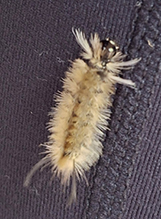 |
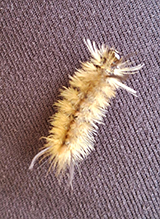 |
|
Zach |
||
Sneaking around inside my truck |
||
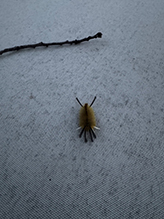 |
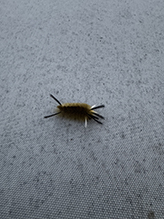 |
|
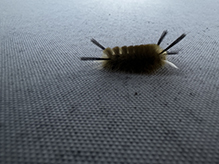 |
||
mthugger9@gmail.com |
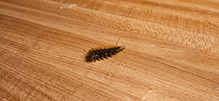 |
found in pond |
Dayle |
 |
Was on the arm of my porch Adirondack chair. |
Alfredo Colon |
||
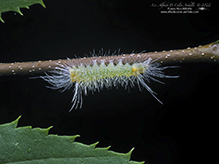 |
||
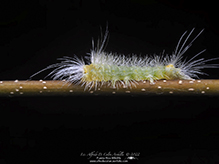 |
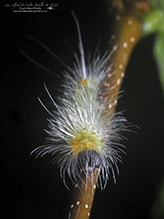 |
|
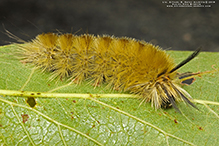 |
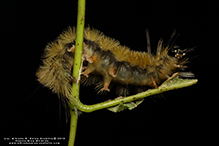 |
|
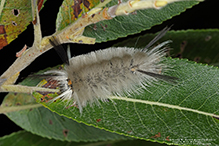 |
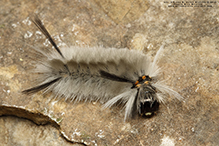 |
|
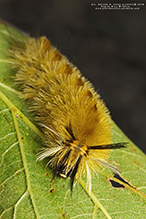 |
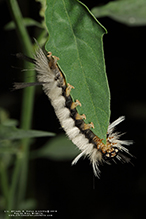 |
|
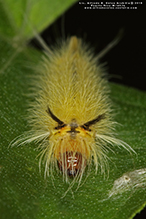 |
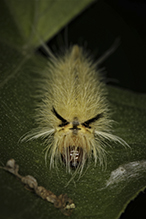 |
|
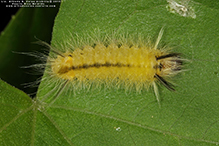 |
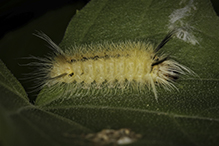 |
|
Mary Walters |
||
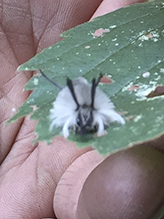 |
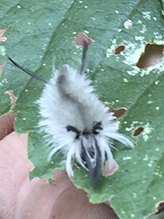 |
|
Tom Baker |
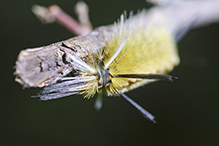 |
MinnesotaSeasons.com Photos |
|

Slideshows |
Banded Tussock Moth |
About
Copyright DianesDigitals |
Banded Tussock Moth - Hodges#8203 (Halysidota tessellaris) |
Halysidota tessellaris (Banded Tussock Moth) |

Visitor Videos |
Share your video of this insect. |
||
This button not working for you? |
||
|
Other Videos |
Banded Tussock Moth (Erebidae: Halysidota tessellaris) on Leaf |
About
Uploaded on Sep 10, 2010 Photographed at the Concordia Language villages, Bemidji, Minnesota (08 September 2010). Thank you to Carmen Champaqne (@Bugguide.net) for confirming the identity of this specimen! |
Banded Tussock Moth Caterpillar - September 7, 2013 |
About
Published on Sep 11, 2013 Banded Tussock Moth Caterpillar (Halysidota tessellaris), Mass Audubon Allens Pond, Westport, Massachusetts, Saturday afternoon, September 7, 2013, 1:20 PM - Canon PowerShot SX50 HS MvI_45616; 1:01 min. |
Banded Tussock Moth Caterpillar |
About
Published on Aug 22, 2013 No description available. |

Visitor Sightings |
Report a sighting of this insect. |
||
This button not working for you? |
||
Luciearl |
Location: Lake Shore, MN … hopped on my pants by the shoreline. Found it after getting back to the house |
 |
Zach |
Location: Mounds view, MN Sneaking around inside my truck |
 |
mthugger9 |
Location: Red Wing, MN found in pond |
Dayle |
Location: NW vermont Was on the arm of my porch Adirondack chair. |
 |
| Alfredo Colon 8/8/2022 |
Location: Albany, NY |
 |
| Alfredo Colon 10/6/2019 |
Location: Woodbury, Minnesota |
 |
| Alfredo Colon 8/29/2019 |
Location: Woodbury, Minnesota |
 |
| Mary Walters 8/19/2018 |
Location: Frontenac, MN This is what I found. I'd like to know if this is, in fact a tussock moth caterpillar. If so, should I eradicate? |
|
| John valo 8/20/2018 |
This is a banded tussock moth (Halysidota tessellaris) caterpillar. It feeds on several species of woody trees and shrubs. When it occurs in large numbers it can cause severe damage to a plant. A single caterpillar is unlikely to harm the plant, though the partially eaten leaves may be unsightly. I am a naturalist, not a gardener. The decision to eradicate or not would depend on your concern for the plant it is feeding on and the potential harm it may cause. |
|
MinnesotaSeasons.com Sightings |
|

